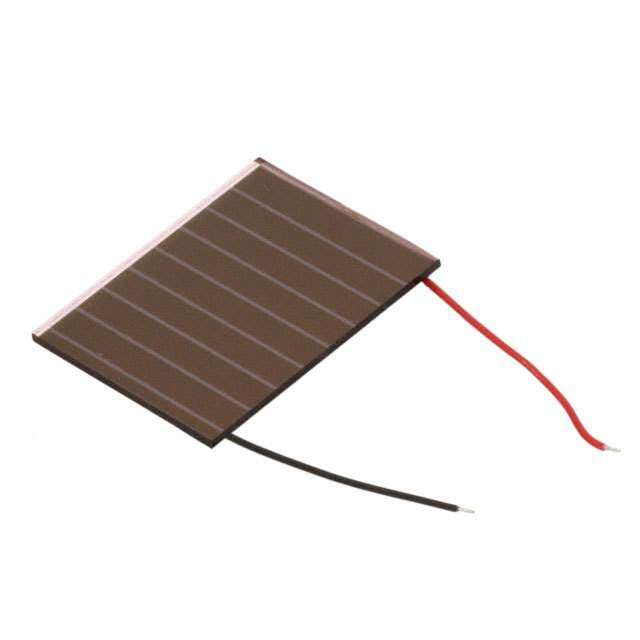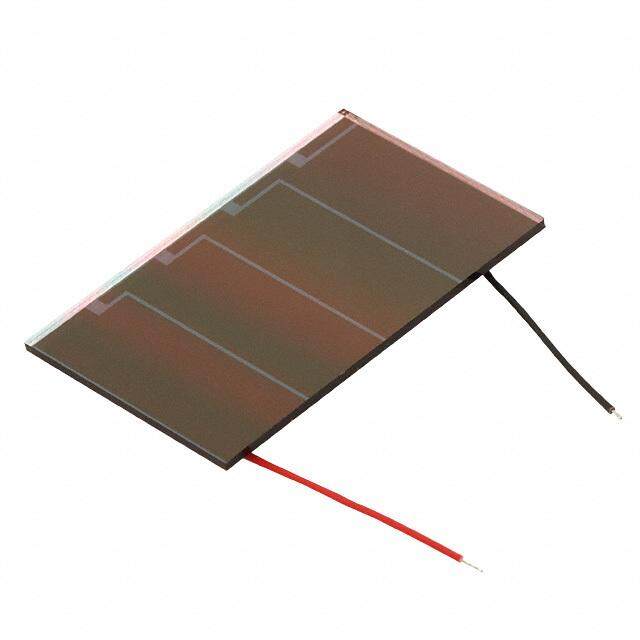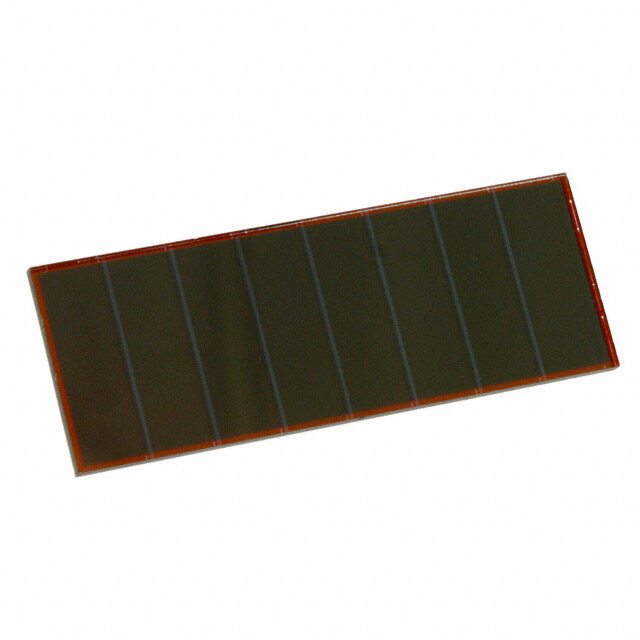- 型号: AM-8701CAR
- 制造商: SANYO Semiconductor Company
- 库位|库存: xxxx|xxxx
- 要求:
| 数量阶梯 | 香港交货 | 国内含税 |
| +xxxx | $xxxx | ¥xxxx |
查看当月历史价格
查看今年历史价格
AM-8701CAR产品简介:
ICGOO电子元器件商城为您提供AM-8701CAR由SANYO Semiconductor Company设计生产,在icgoo商城现货销售,并且可以通过原厂、代理商等渠道进行代购。 AM-8701CAR价格参考。SANYO Semiconductor CompanyAM-8701CAR封装/规格:太阳能电池, Amorphous Solar Cell 182mW 6V。您可以下载AM-8701CAR参考资料、Datasheet数据手册功能说明书,资料中有AM-8701CAR 详细功能的应用电路图电压和使用方法及教程。
| 参数 | 数值 |
| 产品目录 | |
| 描述 | SOLAR CELL AM 57.7MMX 55.1MM |
| 产品分类 | |
| 品牌 | Sanyo Energy |
| 数据手册 | |
| 产品图片 |
|
| 产品型号 | AM-8701CAR |
| rohs | 无铅 / 符合限制有害物质指令(RoHS)规范要求 |
| 产品系列 | Amorton |
| 产品目录页面 | |
| 其它名称 | 869-1014 |
| 功率(W)-最大值 | * |
| 封装/外壳 | 57.7mm 长 x 55.1mm 宽 x 1.3mm 高 |
| 工作温度 | -10°C ~ 60°C |
| 标准包装 | 100 |
| 电压-开路 | 6V |
| 电压@Pmpp | 3.9V |
| 电流@Pmpp | 46.6mA |
| 短路电流(Isc) | 23.9mA |
| 类型 | 无定形 |

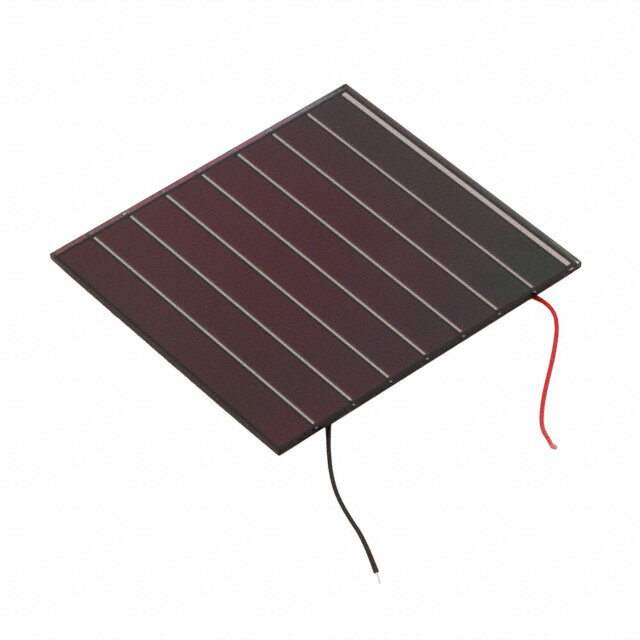

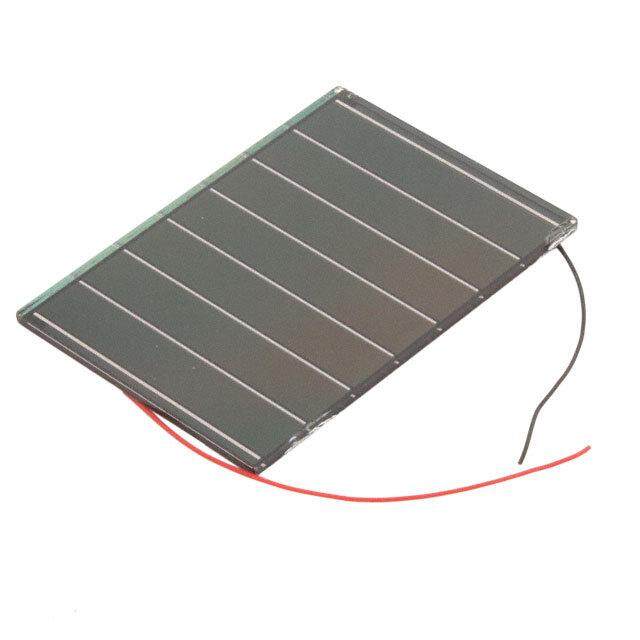

- 商务部:美国ITC正式对集成电路等产品启动337调查
- 曝三星4nm工艺存在良率问题 高通将骁龙8 Gen1或转产台积电
- 太阳诱电将投资9.5亿元在常州建新厂生产MLCC 预计2023年完工
- 英特尔发布欧洲新工厂建设计划 深化IDM 2.0 战略
- 台积电先进制程称霸业界 有大客户加持明年业绩稳了
- 达到5530亿美元!SIA预计今年全球半导体销售额将创下新高
- 英特尔拟将自动驾驶子公司Mobileye上市 估值或超500亿美元
- 三星加码芯片和SET,合并消费电子和移动部门,撤换高东真等 CEO
- 三星电子宣布重大人事变动 还合并消费电子和移动部门
- 海关总署:前11个月进口集成电路产品价值2.52万亿元 增长14.8%



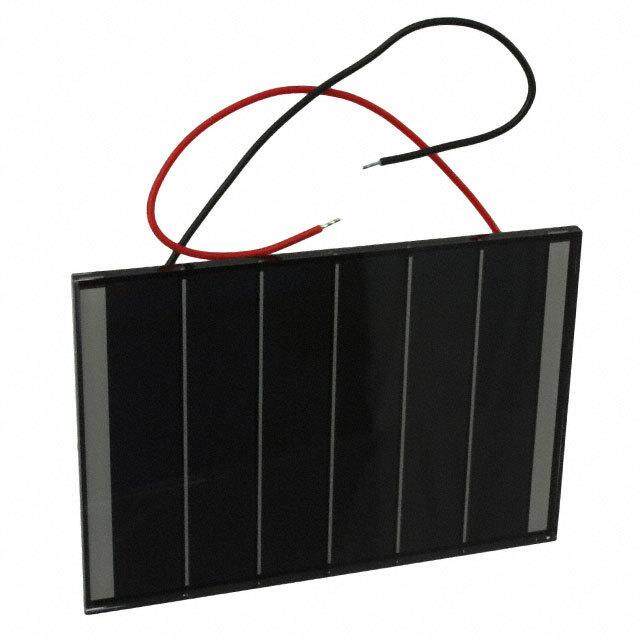
PDF Datasheet 数据手册内容提取
Amorphous Silicon Solar Cells / Amorphous Photosensors 2007-11
The Concept Behind Solar Cell Power Generation Solar cell power is generated using the photovoltaic effect of Light semiconductors. When a semiconductor is exposed to a light source of suitable intensity, a large number of pairs of an electron and a Terleacntsrpoadreent urrent pbeotswiteiveen phhooleto nars ea ngde nsielircaotned a taosm sa. result of the reciprocal action pi +++++++-++-++++++-++-+ Load Electric c Aealrtee ca st rpcoa/nntt sje uranercdet iidonin ft fhbuees tepwd-e tiyenpn e tt hwmeo a ntde-itrfyifapelre.e Tnmtha esteeymr aiiarcleo anthndedun ct thcooer l lpmeocasttieetdirv ieaa lts hb,o otlhtehes Meleectatrloden ----+--------+-----+---+-EPloescittrivoen hole electrodes respectively, resulting in a voltage difference between the electrodes. When an external load is connected, electricity flows through the load. In this way, an a-Si solar cell converts light energy into electricity and supplies power to external loads. Amorphous Silicon Solar Cells Solar cells are classified according to the material employed, i.e., crystal silicon, amorphous silicon, and compound semiconductor solar cells. "Amorphous" refers to objects having no definite shape and is defined as non-crystal material. Unlike crystal silicon, in which atomic arrangements are regular, amorphous silicon features irregular atomic arrangements as shown in the figures below. As a result, the reciprocal action between photons and silicon atoms occurs more frequently in amorphous silicon than in crystal silicon, allowing much more light to be absorbed. Thus, an ultra- thin amorphous silicon film of less than 1μm can be produced and used for power generation. Also, by utilizing metal or plastics for the substrate, flexible solar cells can be produced. Amorton is an integrated amorphous silicon solar cell which has been developed by SANYO. Amorton uses silane (SiH4) as its source gas and is fabricated using a plasma CVD method. Three amorphous silicon layers ⎯ p-layer, i-layer, and n-layer ⎯ are formed consecutively on a glass substrate. This p-i-n junction corresponds to the p/n junction of a crystal silicon solar cell. In the process of The development of the solar cell is progressing with rapid speed. this junction formation, a number of cells are connected in series on a substrate at one time. This allows any As a new energy tool which can effectively harness the amazing power of sunlight, desired voltage to be obtained for a variety of solar cells have the potential to replace fossil fuels as our main means of power generation. equipment operation. Amorphous Crystal Solar energy is both a clean and inexhaustible resource, and it can be used to produce electricity wherever and whenever sunlight is available. Of these technologies, amorphous silicon solar cells have many strengths that surpass those of the earlier crystalline silicon solar cells. In addition, they require little energy to manufacture and use less raw materials, and thus are truly environmentally friendly devices. This technology also allows larger area cells to be manufactured and can take advantage of the flexibility of thin film materials, and they have already been used in a wide range of applications. SANYO was one of the first companies to focus on amorphous silicon solar cells, and developed and is now mass producing the Amorton integrated type amorphous silicon solar cells that feature a new device structure. 1 2
Features of Amorton ■ Solar cells with a variety of voltages can be created Since, unlike the fabrication technique used with crystalline solar cells in which cells cut apart and then connected, multiple cells can be connected in series at the same time as the cells are formed, it is easy to Place used Substrate Feature Reference create batteries with a variety of voltages. (This series connection idea is the same as that used with regular batteries.) Glass Low price (basic substrate) Page 5 ■ Solar cells with a variety of shapes can be created The methods used to form amorphous films have special features that allow other substrates, such as Thin, light weight, unbreakable, can easily be Contact your Indoors Stainless steel formed in arbitrary shapes, highly precise SANYO stainless steel or plastic films, to be used in place of the usual glass substrate. This means that previously dimensions representative. unknown solar cells, solar cells that are round, square, or any complex shape, or solar cells that can be Film Thin, light weight, unbreakable, bendable, Contact your bent, can be created. SANYO can easily be formed in arbitrary shapes representative. It is also possible to create areas in these solar cells that consist of just transparent glass by etching. ■ High sensitivity in the visible light region Glass Low price (basic substrate) Page 5 The human eye is sensitive to light with wavelengths from about 400 nm to 700 nm. Thin, light weight, unbreakable, can easily be Contact your Since amorphous silicon solar cells are sensitive to light with essentially the same wavelengths, in addition Outdoors Stainless steel formed in arbitrary shapes, highly precise SANYO to solar cells, they can also be used as visible light sensors. dimensions representative. Film Thin, light weight, unbreakable, bendable, Page 6 can easily be formed in arbitrary shapes Visible light Support designs with arbitrary sizes and patterns Page 9 as required by the application sensor Application Examples Contact: The person in charge of Amorton products TEL.03-3837-6306 ■Relationship between Output (current) comparison illumination level and output 1000 The figure shows the relationship Electronic Wristwatches Clocks Stopwatches between illumination level and calculators (Solar watches) output. There is an enormous difference between the illumination levels indoors and 500 outdoors. SANYO provides two types of products, indoor products for use in the low Outdoor products Garden Sensor Car Indoor products lights lights accessories illumination levels common in indoor environments and outdoor 1 Illumination 100 1000 10000 100000 [lux] products for the high illumination Dining rooms, Offices, Drafting Rain coffee shops meeting rooms tables Cloudy Bright Direct sun levels common outdoors. Mobile LED Battery POP blinkers ■Relationships between number chargers equipment such products (Curbstone as cell phones of rows of the cell and cell area Current markers) (Illumination level is constant.) [Example] A: 1cm2 : one row of cell B: 1cm2 : two rows of cell C C: 2cm2 : one row of cell B A SANYO can support other applications as well. Contact your SANYO representative for consultation. Voltage 3 4
Amorton List (Glass Substrate) Amorton Film If you require Amorton other than on this list, please consult us. General-Purpose Products Amorton Film is an exceptionally thin, light and flexible amorphous Light silicon solar cell fabricated on plastic film. Specifications Protective film In addition to these advantages, Amorton Film is also resistant to 1 Indoor products Grid electrode crack. Its standard configuration includes protective film covering TCO Typical operating characteristics (Initial) the amorphous silicon solar cell which measures about 0.4mm in Model FL-200lux FL-50lux (Reference value) External dimensions (mm) Weight (g) overall thickness. p AM-1456 1.5V- 5.3μA 1.4V- 1.30μA 25.0✕10.0 0.7 i a-Si AM-1411 1.5V- 8.0μA 1.4V- 2.00μA 29.6✕11.8 1.0 n AM-1437 1.5V- 8.0μA 1.4V- 2.00μA 29.6✕11.8 1.0 AM-1407 1.5V- 11.5μA 1.4V- 2.85μA 38.0✕12.5 1.3 Metal electrode AM-1417 1.5V- 12.5μA 1.4V- 3.10μA 35.0✕13.9 1.3 Plastic film substrate AM-1424 1.5V- 20.0μA 1.4V- 5.00μA 53.0✕13.8 2.0 Protective film AM-1454 1.5V- 31.0μA 1.4V- 7.75μA 41.6✕26.3 3.0 AM-1513 1.8V- 15.0μA 1.6V- 3.75μA 55.0✕13.5 2.0 AM-1805 3.0V- 15.5μA 2.6V- 3.85μA 55.0✕20.0 3.0 General-Purpose Products Amorton Film Configuration AM-1801 3.0V- 18.5μA 2.6V- 4.60μA 53.0✕25.0 3.6 AM-1815 3.0V- 42.0μA 2.6V- 10.50μA 58.1✕48.6 7.8 Specifications AM-1816 3.0V- 84.0μA 2.6V- 21.00μA 96.7✕56.7 15.6 100mW/cm2 SS-50k lux (Initial) Model External dimensions (mm) Weight (g) Indoor products (for high illumination levels) Typical o perating Pmax (Vop-Iop) Typical operating Pmax (Vop-Iop) characteristics (Initial) characteristics (Initial) Typical operating characteristics (Initial) AT-7665 3.0V- 38.6mA 125mW (3.6V- 34.7mA) 3.0V- 17.3mA 58mW (3.6V- 16.2mA) 58.4✕ 56.0✕ 0.4 2 Model FL-200lux SS-10k lux (Reference value) External dimensions (mm) Weight (g) AT-7664 3.0V- 104.0mA 335mW (3.6V- 93.0mA) 3.0V- 46.5mA 156mW (3.6V- 43.3mA) 73.0✕112.0✕ 0.4 4 AM-1819 3.0V- 6.9μA 4.0V- 0.41mA 31.0✕24.0 2.2 AT-7666 3.0V- 343.0mA 1109mW (3.6V- 308.2mA) 3.0V- 154.0mA 517mW (3.6V- 143.6mA) 146.0✕ 167.5✕ 0.4 13 AM-1820 3.0V- 13.3μA 4.0V- 0.79mA 43.0✕26.0 3.1 AT-7963 4.5V- 223.0mA 1083mW (5.4V- 200.6mA) 4.5V- 100.0mA 505mW (5.4V- 93.5mA) 146.0✕167.5✕0.4 13 * Glass thickness is 1.1mm. 2 Outdoor products FL: White fluorescent lamp SS: Solar simulator AT-7S63 15.0V- 134.0mA 2104mW (16.8V- 125.2mA) 15.0V- 60.5mA 980mW (16.8V- 58.3mA) 292.0✕ 168.0✕ 0.4 25 Model chTayrpaicctaelr ios ptiecrsa (tIinnigti a1l)00mW/cPmm2 ax (Vop-Iop) chaTyrapcictearl iostpicesra (tIinnSigtSia-l)50k lux P(Imnitaiax l()V op-Iop) External dimensions (mm) Weight (g) AT-7S64 15.0V- 269.0mA 4208mW (16.8V- 250.4mA) 15.0V- 121.0mA 1960mW (16.8V- 116.7mA) 292.0✕336.0✕ 0.4 50 AM-5308 (1.7V- 68.8mA) 117mW (1.9V- 61.5mA) (1.7V- 31.1mA) 58mW (1.9V- 29.2mA) 50.1✕ 47.2★ 6.4 AM-5302 (1.7V- 105.0mA) 181mW (1.9V- 95.5mA) (1.7V- 47.0mA) 86mW (1.9V- 45.1mA) 31.2✕ 117.8 16.3 AM-5413 (2.2V- 16.7mA) 39mW (2.6V- 15.0mA) (2.2V- 7.5mA) 18mW (2.6V- 7.1mA) 33.0✕ 23.9★ 2.1 Amorton Products for Watches AM-5412 (2.2V- 39.8mA) 93mW (2.6V- 35.8mA) (2.2V- 17.9mA) 44mW (2.6V- 16.9mA) 50.1✕ 33.1 7.3 AM-5610 (3.3V- 5.1mA) 18mW (3.9V- 4.6mA) (3.3V- 2.3mA) 8mW (3.9V- 2.2mA) 25.0✕ 20.0 2.2 AM-5613 (3.3V- 31.6mA) 110mW (3.9V- 28.2mA) (3.3V- 14.5mA) 52mW (3.9V- 13.3mA) 60.1✕ 36.7 9.8 AM-5608 (3.3V- 36.0mA) 125mW (3.9V- 32.0mA) (3.3V- 16.5mA) 59mW (3.9V- 15.1mA) 60.1✕ 41.3 11.0 Amorton Glass Low price (basic substrate) AM-5605 (3.3V- 115.4mA) 401mW (3.9V- 102.7mA) (3.3V- 52.9mA) 189mW (3.9V- 48.6mA) 62.3✕ 117.8 32.5 Thin, light weight, unbreakable, can easily be formed in arbitrary AM-8706 (3.9V- 19.9mA) 81mW (4.6V- 17.7mA) (3.9V- 9.0mA) 39mW (4.6V- 8.3mA) 36.1✕ 41.3★ 4.1 Products Stainless steel shapes, highly precise dimensions AM-8704 (3.9V- 23.8mA) 97mW (4.6V- 21.0mA) (3.9V- 10.7mA) 46mW (4.6V- 9.9mA) 41.2✕ 41.3★ 4.6 for Watches Thin, light weight, unbreakable, bendable, can easily be formed Film AM-8705 (3.9V- 26.9mA) 109mW (4.6V- 23.8mA) (3.9V- 12.1mA) 52mW (4.6V- 11.3mA) 36.1✕ 55.1★ 5.4 in arbitrary shapes AM-8703 (3.9V- 32.1mA) 131mW (4.6V- 28.5mA) (3.9V- 14.5mA) 62mW (4.6V- 13.4mA) 41.2✕ 55.1★ 6.2 AM-5710 (3.9V- 32.6mA) 134mW (4.6V- 29.0mA) (3.9V- 14.7mA) 63mW (4.6V- 13.7mA) 62.3✕ 37.0★ 6.3 AM-8702 (3.9V- 34.4mA) 140mW (4.6V- 30.5mA) (3.9V- 15.5mA) 67mW (4.6V- 14.4mA) 57.7✕ 41.3★ 6.5 SANYO Amorton products are widely AM-5706 (3.9V- 45.9mA) 186mW (4.6V- 40.5mA) (3.9V- 21.0mA) 88mW (4.6V- 19.1mA) 70.0✕ 50.0 15.5 used in solar watches. AM-8701 (3.9V- 46.6mA) 190mW (4.6V- 41.2mA) (3.9V- 21.0mA) 90mW (4.6V- 19.4mA) 57.7✕ 55.1★ 8.6 SANYO can provide custom Amorton AM-5815 (4.5V- 2.5mA) 12mW (5.2V- 2.3mA) (4.5V- 1.1mA) 6mW (5.2V- 1.1mA) 31.8✕ 10.8★ 0.9 products to match the shape of the watch AM-5812 (4.5V- 19.8mA) 93mW (5.2V- 17.8mA) (4.5V- 8.9mA) 44mW (5.2V- 8.4mA) 59.0✕ 28.7★ 4.6 (watch face characters or special AM-5813 (4.5V- 25.0mA) 117mW (5.2V- 22.6mA) (4.5V- 11.3mA) 55mW (5.2V- 10.7mA) 41.2✕ 60.2★ 6.7 designs). AM-8804 (4.5V- 33.3mA) 156mW (5.2V- 30.0mA) (4.5V- 15.1mA) 74mW (5.2V- 14.2mA) 48.1✕ 55.1★ 7.2 SANYO can provide evaluation samples AM-5814 (4.5V- 38.6mA) 180mW (5.2V- 34.7mA) (4.5V- 17.4mA) 85mW (5.2V- 16.4mA) 55.1✕ 60.1★ 9.0 Stainless steel Glass Film in each of the different substrates. AM-8801 (4.5V- 41.9mA) 196mW (5.2V- 37.7mA) (4.5V- 18.9mA) 93mW (5.2V- 17.8mA) 57.7✕ 55.1★ 8.6 AM-5904 (5.0V- 9.9mA) 52mW (5.9V- 8.7mA) (5.0V- 4.5mA) 24mW (5.9V- 4.1mA) 40.1✕ 33.1 5.9 Contact your SANYO representative for AM-5912 (5.0V- 15.3mA) 80mW (5.9V- 13.6mA) (5.0V- 7.0mA) 38mW (5.9V- 6.4mA) 42.9✕ 47.2★ 5.6 consultation. AM-5909 (5.0V- 22.2mA) 116mW (5.9V- 19.6mA) (5.0V- 10.1mA) 55mW (5.9V- 9.3mA) 60.1✕ 41.3 11.0 AM-5914 (5.0V- 23.1mA) 121mW (5.9V- 20.4mA) (5.0V- 10.6mA) 57mW (5.9V- 9.7mA) 50.1✕ 55.1★ 7.5 Specifications (evaluation samples) AM-5913 (5.0V- 30.1mA) 157mW (5.9V- 26.6mA) (5.0V- 13.8mA) 74mW (5.9V- 12.6mA) 60.1✕ 55.1 14.7 (At FL-200lux) AM-5907 (5.0V- 45.7mA) 241mW (5.9V- 40.8mA) (5.0V- 20.6mA) 114mW (5.9V- 19.3mA) 75.0✕ 55.0 18.3 Operating electric characteristics (Initial) Model Type External dimensions (mm) Weight (g) AM-5902 (5.0V- 60.8mA) 317mW (5.9V- 53.7mA) (5.0V- 27.8mA) 150mW (5.9V- 25.4mA) 150.0✕ 37.5 25.0 Operating voltage (V) Operating current (μA) AM-7A03 (5.5V- 227.0mA) 1336mW (6.6V- 202.3mA) (5.5V- 113.0mA) 702mW (6.6V- 106.3mA) 150.0✕ 165.0 110.0 AL-2402 Stainless steel 1.5 10.1 φ27.2 ✕ 0.2 0.7 AM-7D08 (7.2V- 172.0mA) 1303mW (8.5V- 153.2mA) (7.2V- 85.0mA) 684mW (8.5V- 80.5mA) 150.0✕ 165.0 110.0 AM-2709 Glass 3.0 3.3 φ30.8 ✕ 0.7 1.3 AM-5E02 (7.7V- 23.2mA) 189mW (9.2V- 20.5mA) (7.7V- 10.6mA) 89mW (9.2V- 9.7mA) 75.0✕ 55.0 18.3 AM-7E04 (7.7V- 104.0mA) 852mW (9.2V- 92.6mA) (7.7V- 50.0mA) 447mW (9.2V- 48.6mA) 150.0✕ 110.0 74.0 AT-2400B Film 1.5 18.5 26.3 ✕ 26.8 0.1 AM-5S06 (15.4V- 11.4mA) 188mW (18.4V- 10.2mA) (15.4V- 5.1mA) 89mW (18.4V- 4.8mA) 124.5✕ 29.5★ 10.0 AT-2600B Film 2.6 11.6 26.3 ✕ 26.8 0.1 AM-7S03 (15.4V- 70.0mA) 1133mW (18.4V- 61.6mA) (15.4V- 34.5mA) 595mW (18.4V- 32.4mA) 150.0✕ 165.0 110.0 Note: The above table shows standard weights without lead. * Glass thickness of ★ marks model is 1.1mm. Glass thickness without ★ marks model is 1.8mm. FL: White fluorescent lamp SS: Solar simulator 5 6
■ Output Characteristics of outdoor use Amorton Features of Amorton Natural light ranges in illuminance from 10,000 lux to 100,000 Typical Cell Characteristics (25°C) lux (AM-1.5, 100mW/cm2) or more. Amorton is suitable outdoors Opveonl-tacgirecuit Shocurtr-rceinrctuit Moauxtimpuutm Light source The features of Amorton are shown by the current-voltage curve for compact equipment such as chargers. 0.89V/cell 14.8mA/cm2 7.89mW/cm2 AM-1.5,100mW/cm2 in the figure. The curve changes depending on the incident light intensity and Isc the surrounding temperature. Iop Pmax 25°C 25°C 18 20 2.0 nt AM-1.5, 100mW/cm2 e urr 16 C 14 VIsocc : :s ohpoertn-c-ciricrcuuiti tc vuorrletangte 2m] 12 2m]10 Voc 1.0 ell] Current-VVooltlatgaegVoep CurveVoc VIPoompp a: x:o op: ptmitmiamuxumimm uo omppe eoraruattitpninuggt c vuorrlteangte Current [mA/c 1680 Current [mA/c 5 0.5 Voltage [V/c 4 Isc Iope 2 0 1 0.1 Output Characteristics 0 0.2 0.4 0.6 0.8 1.0 1 10 100 1000 Voltage [V/cell] Illuminance [✕103Lux] (SS) Current – Voltage Output Illuminance ■ Output Characteristics of Indoor use Amorton Characteristics of a Cell Dependency Characteristics Typical Cell Characteristics (25°C) 20 1.0 120 Artificial light, such as fluorescent and incandescent light, is used Open-circuit Short-circuit Maximum Light voltage current output source AM-1.5, 100mW/cm2 AM-1.5, 100mW/cm2 indoors. The illuminance of these light sources ranges from 20 lux to 0.63 V/cell 17.0μA/cm2 7.0μW/cm2 FL200lux Voc 100 1,000 lux. Indoors, therefore, Amorton is most suitable for small 18 0.8 eluqxu.ipment such as electronic calculators. Please use under 1,000 2A/cm] 16 0.6 V/cell] %] 80 S S : (sfaollsaer ssiomlaurl alitgohrt source) 20 FL2002L5u°xC 100 25°C 1.0 urrent [m 14 IIospce 0.4 Voltage [ Iope [ 6400 VIIsoocpc:e :s :o hopoperetn-r-acctiriirnccguui tcit cu vurorrelrtenantgte C Voc 12 0.2 Temperature coefficient 20 Voc: -0.3%/°C 15 Isc: +0.08%/°C 2m] 2m] ell] 10 0.0 0 Pmax: -0.2%/°C A/c A/c V/c -20 0 20 40 60 80 0 200 400 600 800 μCurrent [ 10 μCurrent [ 10 IscIope 0.1 Voltage [ DepeOnudTtepemnupct eyTr eaCtmuhrpae er[a°rCac]ttuerriestics LightproEoxpf o[sLuerea vTiensgt (dOauytsd)oors] 5 0 1 0.0 0 0.2 0.4 0.6 0.8 10 100 1000 10000 Terminal Configurations Voltage [V/cell] Illuminance [Lux] (FL) Overcoating Current – Voltage Output Illuminance Characteristics of a Cell Dependency Characteristics 20 0.8 FL200Lux Terminal Voc 0.6 Indoors Outdoors 2A/cm]18 Isc V/cell] FL: fluorescent light B type C type CS type CA type C tyCpeA aRls ot ypopsesible μnt [ 0.4 ge [ VIsocc: :s ohpoertn--ccirirccuuitit c vuorlrteangte e a Curr16 Iope Volt Iope: operating current Temporary Lead Resin 0.2 Temperature coefficient Conductive solder wire coating Voc: -0.3%/°C paste Isc: +0.08%/°C Pmax: -0.2%/°C 14 0 Cannot be soldered. A heat Lead wire can be attached Temporary solder is attached C type terminal with lead The pins are protected with a resin coating after the leads -20 0 20 40 60 80 seal is usable. with regular solder. to a C type device. wire. are attached Temperature [°C] Output Temperature Dependency Characteristics 7 8
Amorton Photosensors List Amorton Photosensors Circuit Diagram Example Number of OP amplifier detects photosensor output current and Model elements External dimensions (mm) Short-circuit current TYP. Dark current (VR = 50mV) MAX. Rf convert to voltage. The signal is linearly amplified. AM-30-11 C, CS, CA 1 14.0 ✕ 13.0 (Glass 1.1t) 17.7μA*1 ––––– Center area: 80nA*2 Center area: 100pA A M -30-15 C 2 5.05 ✕ 3.05 (Glass 0.7t) Around area: 2.8μA*2 Around area: 100pA Center area: 50nA*2 Center area: 100pA Amorphous Vout AM-30-16 C 3 5.05 ✕ 3.05 (Glass 0.7t) Around area (Inside): 0.4μA*2 Around area (Inside): 100pA photosensor Around area (Outside): 1.3μA*2 Around area (Outside): 100pA Op amplifier AM-30-28 CS 1 5.0 ✕ 3.0 (Glass 0.7t) 7.5μA*2 10pA AM-30-31 C 1 2.1 ✕ 2.0 (Glass 0.4t) 1.2μA*2 10pA Circuit Diagram (Example) AM-30-33 C 1 5.0 ✕ 3.0 (Glass 0.7t) 7.5μA*2 10pA *1: At 200lux, white fluorescent light *2: At 1000lux, fluorescent light for color illuminator * For terminal configurations, refer to page 8. Amorton Photosensors Application Example Effective area 14.0 5.05 5.05 2.1 5.0 The following shows typical applications of amorphous photosensors 5 1 2 1. 1. 13.0 8.7 3.05 1.4 3.05 2.0 3.0 2.2 0.88 11.9 2.15 1.72 0.84 3.1 <AM-30-11> <AM-30-15> <AM-30-16> <AM-30-31> <AM-30-28> Adjusting SANYO can also provide custom products. Exposure System Lighting Luminosity LCD Back Light Control Control Features of Amorton Photosensors ■Cellular Phone ■Camera ■Street Light ■Mobile Products ■Garden Light ■Car Navigation Amorphous Photosensor is a kind of Photo Diode, and can detect light and its intensity. Amorphous visible-light photosensor <AM-30-28> Human eye spectral sensitivity Single crystal silicon photosensor 1 10-4 Relative sensitivity0.5 Current [A]111000---567 <AM-30-28> <AM-30-15> ConStAacNtY yOo ucra nS AsNupYpOo rret portehseer natpaptilvicea ftoior ncso nass uwltealtli.o n. 10-8 400 500 600 700 800 900 1000 1 10 102 103 104 : Effective area Wavelength [nm] Illuminance [lux] Amorphous Photosensor Pattern Spectral Sensitivity of Amorphous Photosensor Dependence of Isc Characteristics on Illumination Shape Example High Sensitivity detection within Output current is proportional to Flexibility in pattern shaping or the visible-light spectrum illumination sizing Human eyes are sensitive to the light Accurate light detection is possible because Amorphous photosensors provide flexible wavelength ranging from approximately output current increases proportionally to the designing in size and shape to fit your needs. 400nm to 700nm. illuminance. Amorphous photosensors have sensitivity in the same range and provide light sensing capability similar to human eyes. 9 10
Solar Cell Output and Light Sources The output of solar cells differ depending on the categories of light sources to which they are exposed. This is because photoelectric conversion efficiency changes with respect to the wavelength and intensity of the light. 1. Categories of light sources The general light source for solar cells is sunlight out of doors, and fluorescent or incandescent light indoors. The following outline describes the various categories: Light source Sunlight Artificial light AM-0 Outer space (solar light at global average revolution orbit) Incandescent light General-use incandescent light, halogen lamp When the sun is directly overhead (0m above sea level at the equator, AM-1 Fluorescent light Daylight, white, and warm white colors vertical sunlight at meridian passage) AM-1.5 When zenithal angle Electric discharge lamp Mercury-vapor lamp, sodium-vapor lamp, xenon lamp (Sunlight angle 0° when sun is directly overhead) is 48.2°. Other AM-2 (when zenithal angle is 60°), etc. 2. Brightness When sunlight and fluorescent light are compared in terms of brightness, the results are shown as follows: [Light Source] Sunlight Fluorescent light Condition Illuminance (lux) Condition Illuminance (lux) Design stand Direct sun 100,000 to120,000 Around 1,000 (partially illuminated) Bright 50,000 to100,000 Office/conference room 300 to 600 Cloudy 10,000 to 50,000 Restaurants/coffee shops Below 200 Rain 5,000 to 20,000 3. Radiant spectrum of light source and spectral sensitivity of solar cells 1.0 0.9 ue) 0.8 Sunlight spectral (AM-1.5) al v y (Relative 00..67 F(Wluhoirtees ccoelnotr )light ve value) sit ati diant spectrum inten 000...345 Human eye a-Si solar cecl-lsSi solar cells 001...680 ectral sensitivity (Rel a 0.2 spectral sensitivity 0.4 p R s ell c 0.1 0.2 ar ol S 0 0.4 0.5 0.6 0.7 0.8 0.9 1.0 1.1 1.2 Wave length [μm] 11 12
Precautions in Handling Amorton and Amorphous Photosensors Any and all SANYO Semiconductor Co.,Ltd. products described or contained herein are, with regard to "standard application", intended for the use as general electronics equipment (home appliances, AV equipment, communication device, office equipment, industrial equipment etc.). The products mentioned herein shall not be intended for use for any "special application" (medical equipment whose purpose is to sustain life, Do not scratch the rear surface with a hard object because it could damage amorphous silicon aerospace instrument, nuclear control device, burning appliances, transportation machine, traffic signal system, safety equipment etc.) that shall require extremely high level of reliability and can directly threaten (1μm thick active layer) and causes electrical malfunction even though the surface is protected by human lives in case of failure or malfunction of the product or may cause harm to human bodies, nor shall they resin coating. grant any guarantee thereof. If you should intend to use our products for applications outside the standard applications of our customer who is considering such use and/or outside the scope of our intended standard applications, please consult with us prior to the intended use. If there is no consultation or inquiry before the intended use, our customer shall be solely responsible for the use. Be careful not to get injured with the sharp edges of the substrate material (glass or stainless steel). Specifications of any and all SANYO Semiconductor Co.,Ltd. products described or contained herein stipulate the performance, characteristics, and functions of the described products in the independent state, and are not guarantees of the performance, characteristics, and functions of the described products as mounted in the Employ robust and airtight encapsulation when the cell is expected to receive mechanical customer's products or equipment. To verify symptoms and states that cannot be evaluated in an shocks by falling objects or exposed to harsh weather conditions. Note shattered glass pieces can independent device, the customer should always evaluate and test devices mounted in the customer's products or equipment. cause injury and humid environment can damage the cell. SANYO Semiconductor Co.,Ltd. assumes no responsibility for equipment failures that result from using products at values that exceed, even momentarily, rated values (such as maximum ratings, operating condition ranges, or other parameters) listed in products specifications of any and all SANYO Semiconductor Avoid touching the cell in the daytime because you may get burned with heat particularly when the Co.,Ltd. products described or contained herein. SANYO Semiconductor Co.,Ltd. strives to supply high-quality high-reliability products, however, any and all insolation is strong. semiconductor products fail or malfunction with some probability. It is possible that these probabilistic failures or malfunction could give rise to accidents or events that could endanger human lives, trouble that could give rise to smoke or fire, or accidents that could cause damage to other property. When designing equipment, Do not touch the light-receiving side with bare hands because it stains the surface and affect adopt safety measures so that these kinds of accidents or events cannot occur. Such measures include but electrical output. are not limited to protective circuits and error prevention circuits for safe design, redundant design, and structural design. In the event that any or all SANYO Semiconductor Co.,Ltd. products described or contained herein are controlled under any of applicable local export control laws and regulations, such products may require the Static electricity can damage the cell. As it deemed necessary, consider a proper method to remove export license from the authorities concerned in accordance with the above law. static electricity. No part of this publication may be reproduced or transmitted in any form or by any means, electronic or mechanical, including photocopying and recording, or any information storage or retrieval system, or otherwise, without the prior written consent of SANYO Semiconductor Co.,Ltd. Any and all information described or contained herein are subject to change without notice due to product/technology improvement, etc. When designing equipment, refer to the "Delivery Specification" for the Store in cool, low-humid environment without corrosive gas to avoid possible damages to the cell. SANYO Semiconductor Co.,Ltd. product that you intend to use. Information (including circuit diagrams and circuit parameters) herein is for example only; it is not guaranteed for volume production. Upon using the technical information or products described herein, neither warranty nor license shall be granted with regard to intellectual property rights or any other rights of SANYO Semiconductor Co.,Ltd. or any Consider fail-safe or prolixity in your product design. third party. SANYO Semiconductor Co.,Ltd. shall not be liable for any claim or suits with regard to a third party's intellectual property rights which has resulted from the use of the technical information and products mentioned above. 13
Ordering number : EP120B ●SANYO Semiconductor Co.,Ltd. Website http://www.semic.sanyo.co.jp/index_e.htm SANYO Semiconductor Co., Ltd. This catalog provides information as of November, 2007. Specifications and information herein are subject to change without notice.
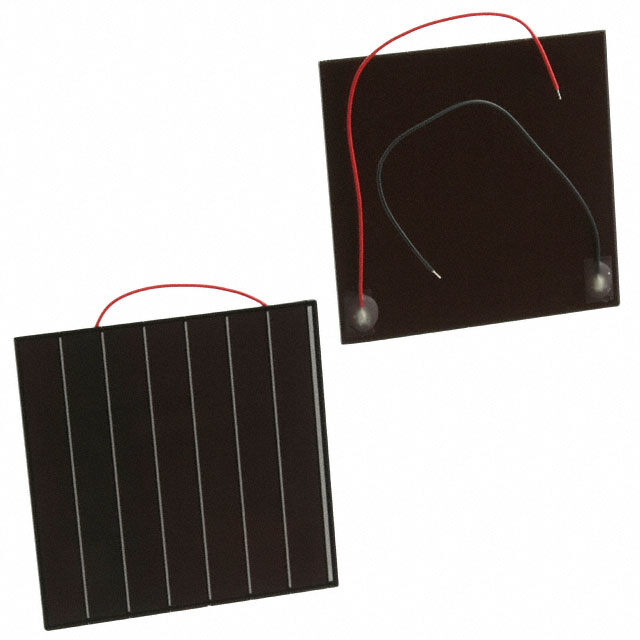
 Datasheet下载
Datasheet下载
